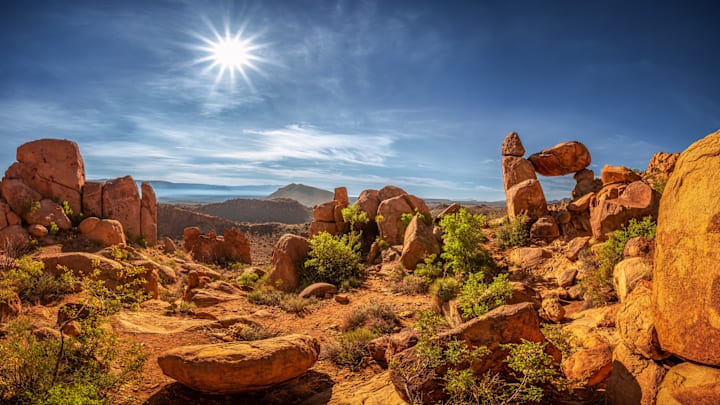National Parks are more popular than ever. That means, in addition to seeing stunning nature at sites like the Grand Canyon, Yellowstone, and Yosemite, you’ll also encounter a ton of tourists. The good news is, there are numerous hidden gems within the national park system that you can enjoy without the crowds. They may not have the same level of name recognition as other sites, but offer just as much natural beauty—without most of the foot traffic.
1. Isle Royale National Park // Michigan

You can’t reach Isle Royale National Park by car, or even by foot. This remote park, located in the middle of Lake Superior in Michigan, is accessible only by air or water. Four passenger ferries and one seaplane bring visitors to the island, but rides can be hard to secure without a reservation. Once you arrive, you’ll be greeted by 571,790 acres of breathtaking wilderness area where you can camp, kayak, and backpack far from civilization.
2. Hot Springs National Park // Arkansas

At just 5550 acres, Hot Springs is one of the smallest national parks in the U.S., but there’s still plenty to do there. You can hike on wooded or urban trails and see the natural hot springs that have been attracting people to the area for centuries. And if you’re in the mood to relax after a long day outdoors, the surrounding town of Hot Springs is filled with historic bathhouses that source mineral water from the springs.
3. Dry Tortugas National Park // Florida

Every day, a ferry transports passengers 70 miles from Key West, Florida, to Dry Tortugas National Park. The island houses the ruins of Fort Jefferson—an all-masonry military fort built between 1846 and 1875 to protect the U.S.’s access point to the Gulf of Mexico. The park was originally established to protect historically important structures, but Dry Tortugas is also a great place to enjoy nature: Snorkelers and scuba divers can spot pristine coral reefs, nurse sharks, and sea turtles close to shore.
4. Lassen Volcanic National Park // California

The most famous national park with volcanoes is in Hawaii, but you don’t need to leave the contiguous U.S. to see these natural wonders up close. Lassen Volcanic National Park in California is home to all four of the different types of volcanoes: shield, composite, cinder cone, and plug dome. There hasn’t been an eruption there in nearly a century, but the area is volcanically active, as evidenced by the park’s steam vents, boiling springs, and mudpots.
5. Congaree National Park // South Carolina

Prior to the late 19th century, there were more than 52 million acres of floodplain forests across the southeastern U.S. That area has since shrunk considerably, and today Congaree National Park represents, according to its website, “the largest intact old growth bottomland hardwood forest” in the region. The floodplain fed by the Congaree River makes the park ideal for kayaking, canoeing, and fishing. For a closer look at some of the tallest deciduous trees in the country, you can hike beneath the forest canopy on a wooden boardwalk trail.
6. Big Bend National Park // Texas

Big Bend is home to some of the most breathtaking nature Texas has to offer. Roughly 600 species of vertebrates and 3600 species of insects have been identified in the national park. During the day, you can search for cacti blooming in the desert, canoe down the Rio Grande, and go horseback riding. At night, the park is one of the best places in the country to stargaze.
7. Gates of the Arctic National Park and Preserve // Alaska

As the name suggests, Gates of the Arctic is the northernmost national park in the U.S. Located 250 miles from Fairbanks, Alaska, and lacking any roads or trails, the park doesn’t get many visitors. People who are willing to make the trek north will be rewarded with a vast expanse of wilderness largely untouched by humans. Migrating caribou, the northern lights, and landscape shaped glaciers make up the park’s most impressive sights.
